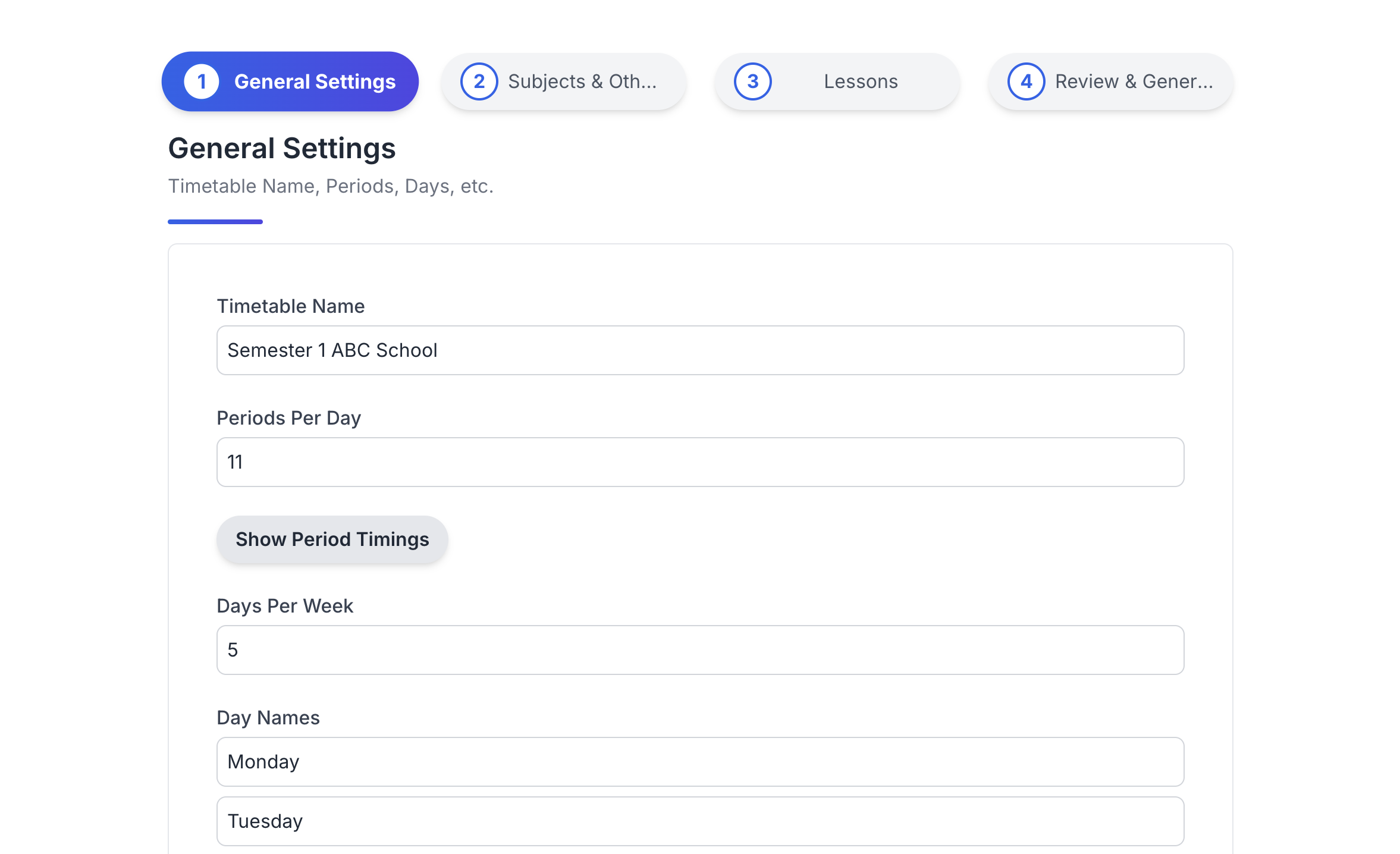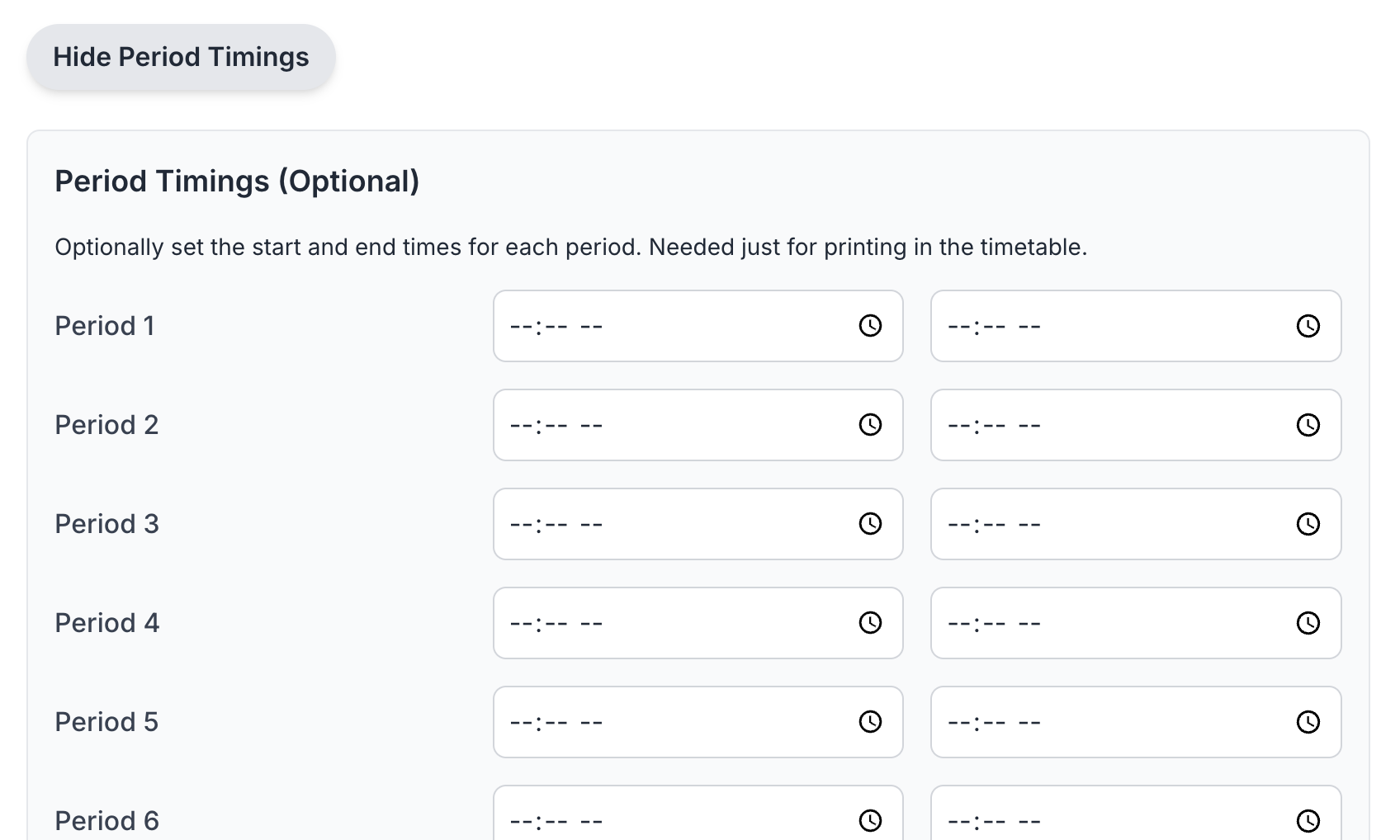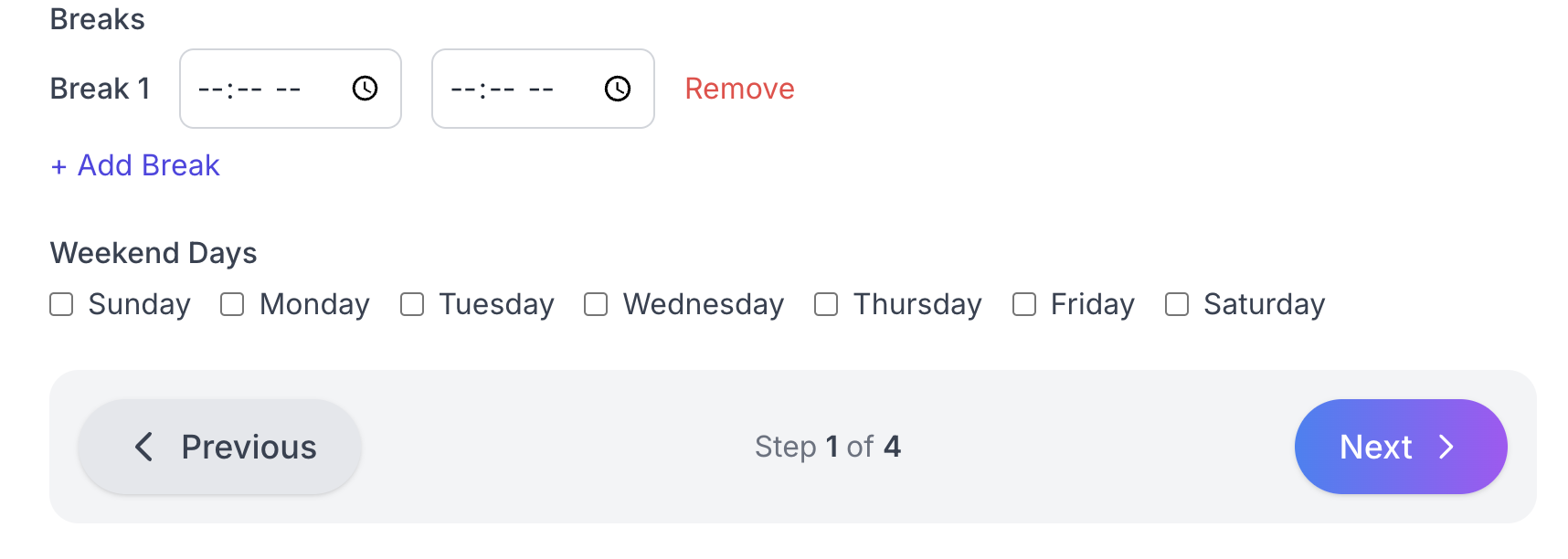Introduction
The first step in generating an effective school timetable is establishing the foundational parameters of your academic structure. In this section, you'll learn how to set up the basic structure of your timetable, including periods, breaks, and working days.
Before you start, make sure you have thought about:
- How many periods your school day has
- Which days of the week you have classes
- When your breaks occur throughout the day
- Any special period requirements
Basic Configuration
Start by defining the fundamental elements of your timetable:

General Setup
Required Settings:
- Timetable Name: Give your timetable a descriptive name (e.g., "Semester 1 2024" or "Primary School 2025")
- Number of Periods: Set how many periods occur each day
- Working Days: Select which days of the week your school is in session
- Basic Break Structure: Define when breaks occur during the school day
While you can generate a timetable with just these basic settings, adding period timings and break details will make your final timetable more useful and readable for teachers and students.
Defining Periods
Periods are the basic time blocks for your timetable. Setting them up correctly is crucial for an effective schedule.

Period Configuration
Key Period Settings:
- Start and End Times: Define when each period begins and ends
- Duration: Set how long each period lasts (commonly 40-60 minutes)
- Buffer Time: Optional transition time between periods
- Period Labels: Custom naming for special periods (e.g., "Assembly," "Homeroom")
Common Period Structures:
Standard Period Duration
A consistent period duration creates a balanced schedule:
Period 1: 8:30 AM - 9:25 AM (55 min)
Period 2: 9:30 AM - 10:25 AM (55 min)
Period 3: 10:30 AM - 11:25 AM (55 min)
Break: 11:25 AM - 11:45 AM (20 min)
Period 4: 11:45 AM - 12:40 PM (55 min)
Variable Period Duration
For schools with special needs, you can set different durations:
Period 1: 8:30 AM - 9:15 AM (45 min - Morning Assembly)
Period 2: 9:20 AM - 10:20 AM (60 min - Core Subjects)
Period 3: 10:25 AM - 11:05 AM (40 min)
Setting Up Breaks
Breaks are essential for both students and teachers and improve the overall learning experience when properly scheduled.

Break Time Setup
Common Break Types:
- Short Breaks: 5-15 minutes between specific periods
- Lunch Break: 30-60 minutes, typically midday
- Assembly: Weekly or daily gatherings (can be configured as a special break)
- Extended Breaks: For special activities or events
Strategic Break Placement: Place longer breaks after intensive subjects or in the middle of the day to help students refresh. Consider staggered lunch breaks if you have limited cafeteria capacity.
Advanced Configuration Options
TimetableMaster offers several advanced configuration options for schools with special requirements:
Day Rotation vs. Fixed Weekday
Fixed Weekday Schedule
Each weekday has the same schedule every week.
Advantages: Simple to understand, consistent for planning
Best for: Primary schools, schools with simple schedules
Day Rotation Schedule
Uses a cycle of days (e.g., Day 1-6) that rotates regardless of weekday.
Advantages: Fair distribution of prime learning times, accommodates holidays
Best for: Secondary schools, complex scheduling needs
Custom Period Labels
You can create custom labels for specific periods to mark:
- Lab sessions
- Double periods
- Assembly times
- Extracurricular activities
Time Exclusions
Set global time exclusions for:
- School-wide events
- Staff meetings
- Public holidays
- Term breaks
Tips & Best Practices
Start Simple
Begin with the essential settings and add complexity as needed. A minimalistic approach often leads to better timetables.
Consult Stakeholders
Discuss period structures with department heads, teachers, and administrators to ensure the timetable structure meets everyone's needs.
Consider Learning Patterns
Research shows that complex subjects are best taught during morning hours when students are most alert. Consider this when structuring your day.
Plan for Growth
Set up your timetable structure with future growth in mind. Creating flexible foundations now will make it easier to accommodate additional classes or teachers later.
Next Steps
Once you've configured your general information, you're ready to move on to the next step: adding subjects to your timetable.
Before Moving On, Ensure You Have:
- ✓ Named your timetable
- ✓ Defined your periods structure with accurate timings
- ✓ Set up all necessary breaks in your schedule
- ✓ Configured your school days
Ready to proceed? Continue to the next step to start adding subjects to your timetable.